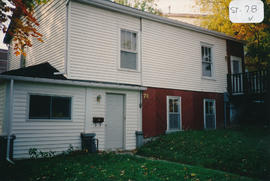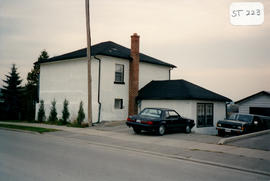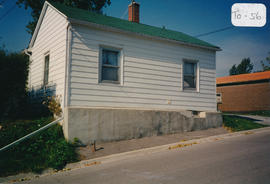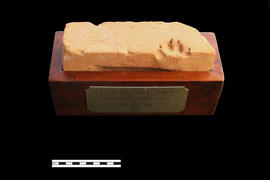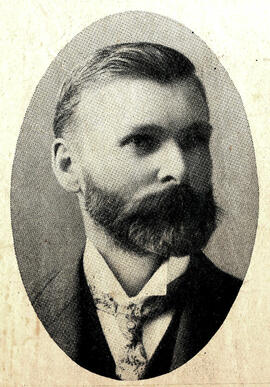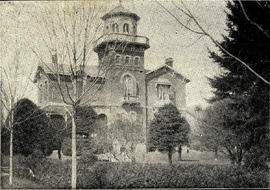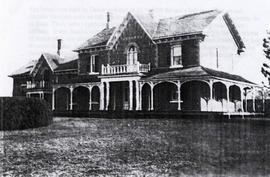- CA BWGPL GJ-HB-2017-04-21-07
- Unidad documental simple
- 1996
Parte deGeorge Jackson fonds
The mid-block building located at 47/49 Simcoe Road was built around 1830-1860 in the Neoclassical Duplex style. Originally, there was a long, one-storey, frame house located at this site. It had a verandah on the northwest side, a picket fence along the street, a large barn on the south side of the house, a garden at the back and it was the home of Lew McConkey Sr. (a grain and seed merchant), his wife, and son. Lew had an office on the north side of Holland Street. New owner Paul Sadlon had Len Saint build a garage and a storage building at the back. Paul and his wife were market gardeners. Their son owned Bruce Sadlon Motors. The house was later converted into two apartments. Jack Gibney and his wife (Sadie Copeland) and their three daughters (Doris, Joyce and Muriel) lived here at one time. He was a horse trainer and worked for Dick Crake for many years. Jack replaced Alfred Payne (a bachelor who lived at the Queen’s Hotel). The current duplex was built on the same property after the house was demolished. Harold Gwyn, owner of a plumbing and heating business, was the owner of this newer building at the time this photo was taken in 1996.
The two-storey, four-bay, semi-detached house has a rectangular plan, a formal, symmetrical façade, and a medium-pitched, gable roof that has a central chimney (not original). Slightly-raised, separated, side-hall entrances are located at either end of the façade. This gives greater privacy than paired entrances, but it places habitable rooms along the party wall. The doors are set into plain, rectangular openings and are not original. There are large window openings with low floor to ceiling heights. Equal-sized, ground-floor and second-floor windows (not original) with high sills are set into plain, rectangular openings. The openings have plain, wood frames and sills. Similar window openings above the entrance doors may have once existed and then been covered. The building has wood frame construction with vinyl siding (not original), a cut- stone foundation, and a basement. According to the 2000 inventory, few original details remain other than the building’s form. It also notes that the slightly-sagging roof suggests insufficient structural supports in the centre of each house. (1, 2, 3)
Sin título



